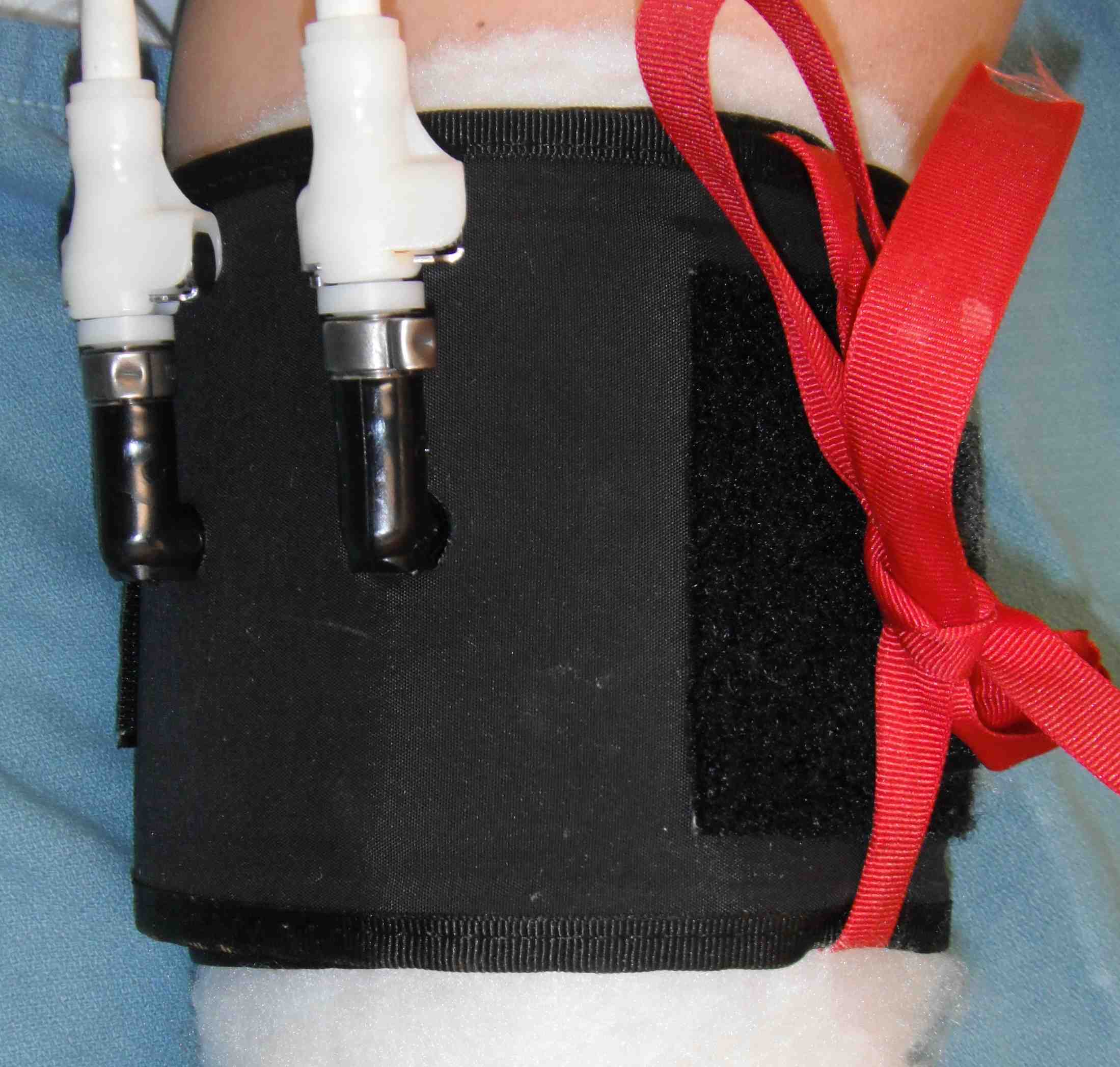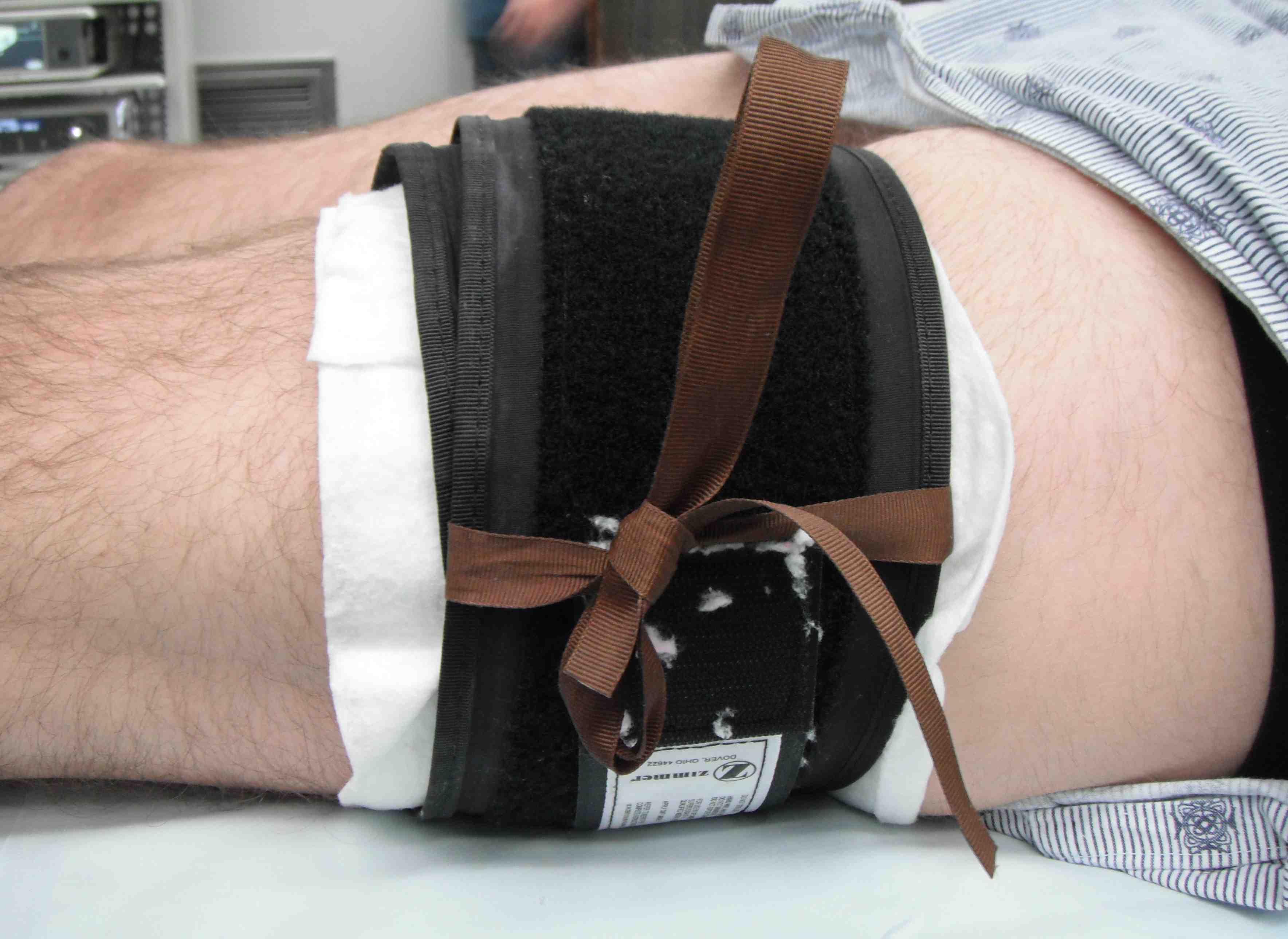Definition
Device that encircles a limb to occlude the vascular supply
Aim is to provide bloodless field
Contra-Indications
Local
- poor skin
- PVD
- DVT
- vascular bypass surgery
General
- sickle cell anaemia
- Polycythemia Rubra Vera
Cuff Design
Pressure greatest at centre with parabolic fall off either side
Options
- tapered / conical
- non-tapered
Arterial Occlusion Pressure
1. Less for conical tourniquets than non conical
- limbs are not cylindrical
- limbs are tapered
- tourniquets should be too
- gives even pressure transmission
2. AOP reduced as tourniquet width increased
- Ratio Cuff Width to Limb Circumference
- < 0.1 : 1 then AOP > 400mmHg
- > 0. 3 : 1 then AOP < SBP
Cuff Pressure
No clear guidelines
Aim just enough to stop arterial flow
Suggestions
- UL ~ 250mmHg (100mgHg over SBP)
- LL ~ 300 - 350mmHG (double SBP)
Mechanism of Tourniquet Injury

1. Nerve damage
- mainly secondary to pressure
- causes neuropraxia
- usually no Wallerian degeneration or loss of axoplasmic flow
- nerves very susceptible to excessive pressure (i.e. faulty gauge)
2. Muscle damage
- secondary to ischaemia
- damage maximum under cuff
3. Progressive acidosis in venous blood
- pH drops to 6.9 at 2 hours
- requires 15-20 minutes to return to prior levels
- patient's analgesia requirements will rise at this time
- have reaction to metabolites upon tourniquet release
4. Chemical burns
- cannot allow skin prep to pool under tourniquet
- becomes pressured into skin
- can create a 3o chemical burn
- place wool under to protect skin
- occlusive dressing over tourniquet to prevent pooling
- this complication is impossible to defend
Cuff Times
Sapega et al JBJS Am 1988
- study in dogs
- limiting time to 1.5 hours minimised muscle ischaemia damage
- tourniquet release for 5 minutes
- permitted an additional 1.5 hours with comparative degree of safety
Generally
- tourniquet up for maximum of 2 hours
- release for minimum of 20 minutes
